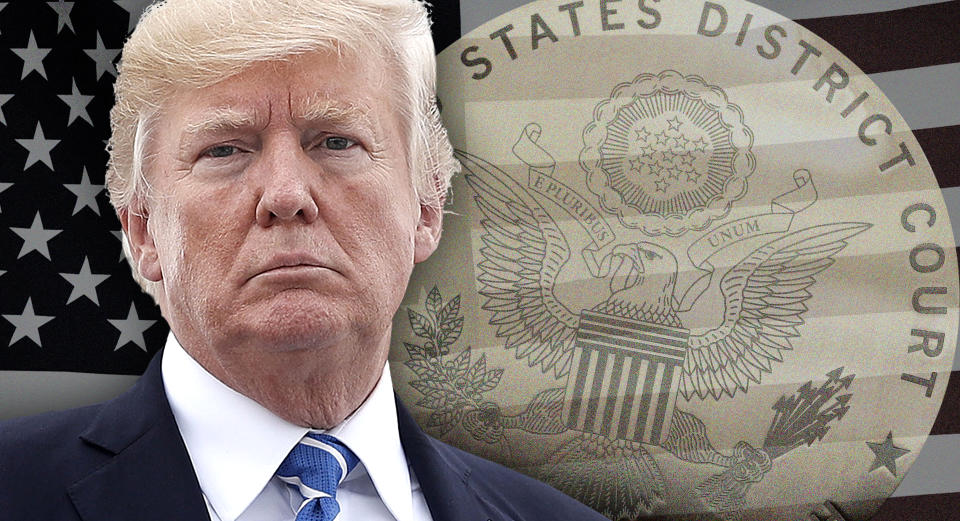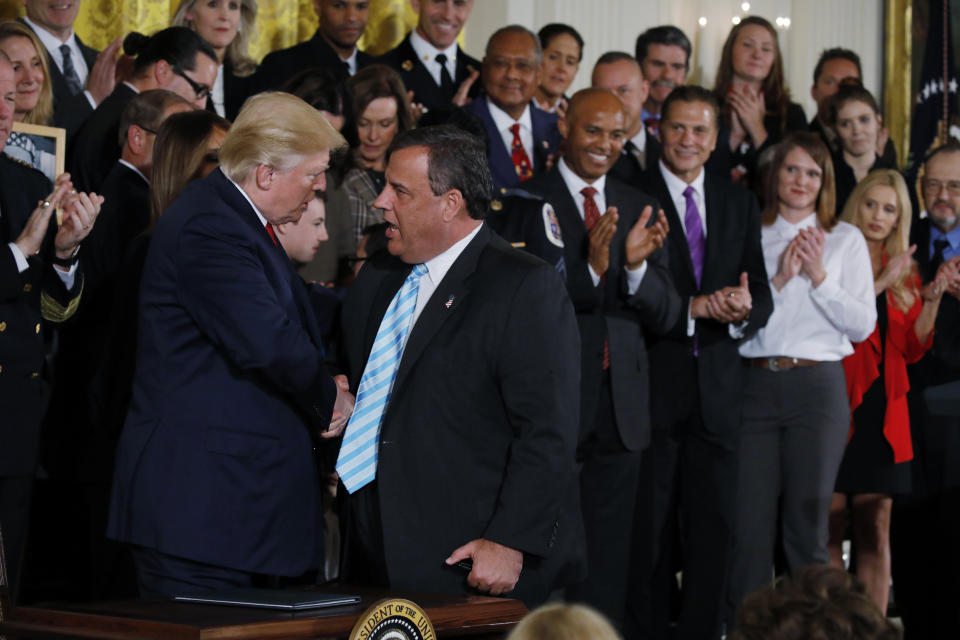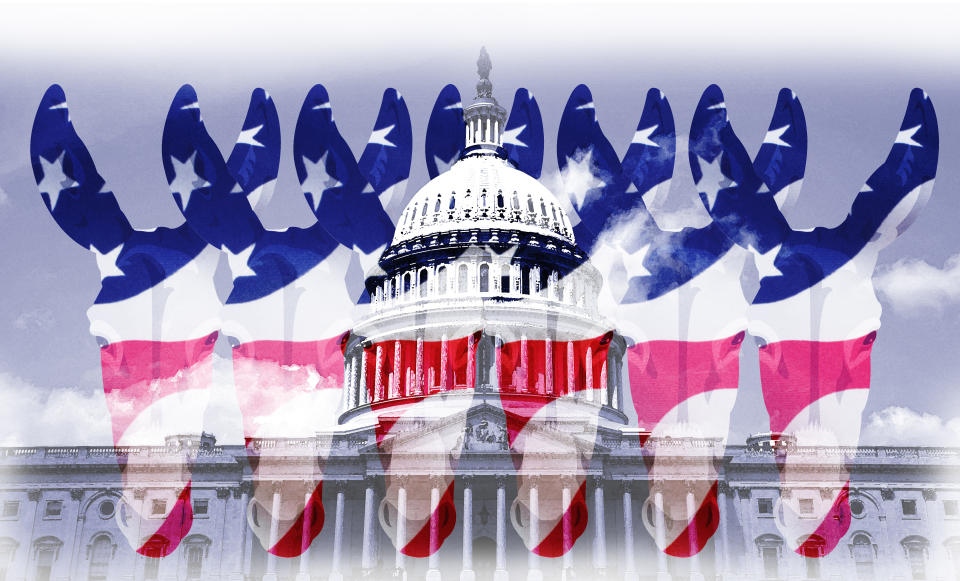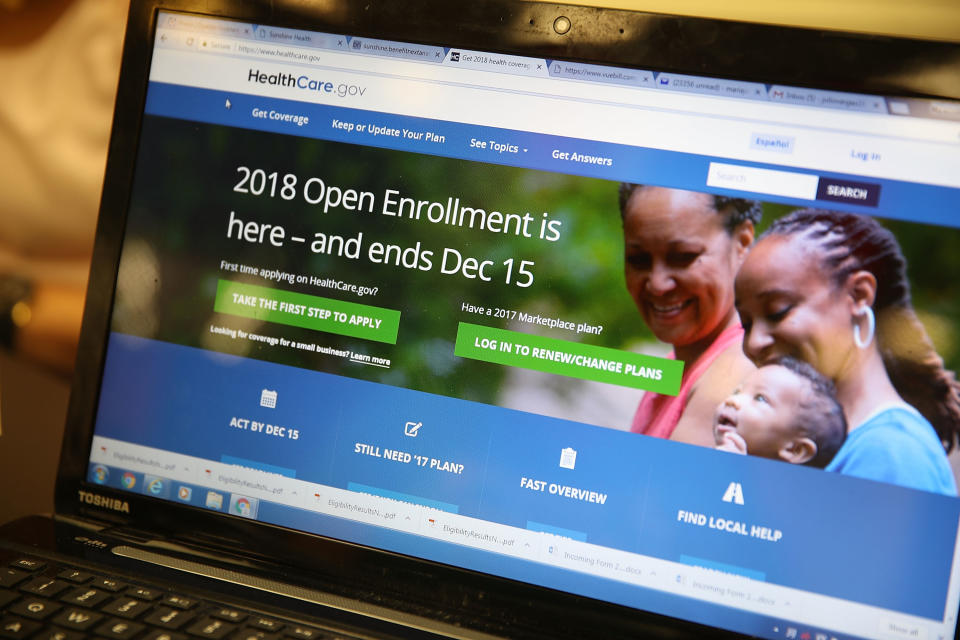While you were tweeting: Seven overlooked stories from 2017
In the 1985 cinematic masterpiece Back to the Future (and its sequels), teenager Marty McFly often relies on a simple but effective method to escape unpleasant situations.
“Whoa, whoa, Biff,” Marty says nonchalantly, pointing over the shoulder of his nemesis, Biff Tannen. “What’s that?”
Again and again, Biff, or one of his equally loathsome relatives, wheels around to see what Marty is pointing at — and again and again, Marty socks him and runs away.
In 2017 America’s collective news feed was like one Marty McFly after another: a nonstop succession of tweets, insults, novelties and transgressions, many of them coming from the current occupant of the Oval Office, that compelled us to look this way and that way and this way and that way.
Meanwhile, the deeper story of the day often receded into the distance, cast aside by a news cycle struggling to churn through all the conflict and chaos created by our Disrupter-in-Chief, President Donald Trump.
Now that 2017 is coming to a close, however, we thought it would be useful to look back on the year with some perspective and highlight some of the most important stories that didn’t get the attention they deserved the first time around — usually because America was too distracted by whatever that was over there.
In no particular order:
_____
Trump’s campaign to reshape the courts

Amid all the punditry and prognostication about the administration’s fumbling attempts to advance its agenda on Capitol Hill, the press and the public largely overlooked how successful Trump has been at leaving his mark on a different branch of government: the judiciary.
When Barack Obama took office in 2009, he had 54 judicial vacancies to fill; when Trump took office, he inherited twice that number, thanks in large part to Mitch McConnell’s strategy of halting the judicial-appointments process during Obama’s last two years in the White House. The new president has proceeded to fill these vacancies at an unprecedented rate, and his nominees have been “the youngest, whitest, male-est, and most conservative in modern memory,” as the New Yorker’s Jeff Shesol recently pointed out. As a result, Trump has brought about “a wholesale change among the federal judiciary” that will “have a significant impact on the shape and trajectory of American law for decades,” says Democratic Sen. Chris Coons of Delaware. “This will be the single most important legacy of the Trump administration.”
And the president may only just be getting started. Last month, the founder of the influential Federalist Society unveiled a plan that would allow Trump to add “twice as many lifetime members to the federal judiciary in the next 12 months (650) as Barack Obama named in eight years (325)” — and would ultimately leave the courts evenly divided between judges appointed by Trump and those appointed by the previous nine presidents combined.
_____
Mike Pence prepares for Trump’s downfall — just in case

In public, Vice President Mike Pence, Trump’s staunchly evangelical No. 2, is the very picture of deference and loyalty; he has repeatedly demonstrated that he will defend the president no matter what he says or does.
But behind the scenes, Pence is reportedly thinking ahead to a time when he may no longer have to play the good soldier. In May, Pence became the first sitting veep to form a national political action committee at the beginning of his term, a move that will make it easier to campaign for other Republicans now — and later, perhaps, for himself. (Pence’s PAC has gone on to raise more money than President Trump’s.) In July Pence installed Nick Ayers, a sharp-elbowed political operative, as his chief of staff. Pence has traveled to important political events in Iowa, the first caucus state, and opened the vice presidential residence to key conservative activists. Finally, “Multiple advisers to Mr. Pence have already intimated to party donors that he would plan to run if Mr. Trump did not,” according to the New York Times.
Pence rarely surfaces in the headlines; his boss sucks up all the oxygen. But he’s worth watching. Earlier this month the Atlantic reported that after the “Access Hollywood” tape threatened to derail Trump’s presidential campaign, Pence was “contemplating a coup” — and he immediately “made it clear to the Republican National Committee that he was ready to take Trump’s place as the party’s nominee.”
As Robert Mueller’s Russia investigation digs into Trump’s finances and closest confidants — and as a potential Democratic wave builds in 2018’s House and Senate races — it’s easy to imagine Pence himself preparing for a post-Trump future that could come sooner than expected.
“It’s not a matter of when Republicans are ready to turn on Trump,” one senior GOP Senate aide told the Atlantic. “It’s about when they decide they’re ready for President Pence.”
_____
All talk — and little action — on the opioid crisis

It was one of 2016’s signature campaign issues: the opioid addiction crisis ravaging small towns from New Hampshire to New Mexico. Every candidate, Republican and Democratic, vowed to do something about it once in office, including Donald Trump. “[T]he people that are in trouble, the people that are addicted, we’re going to work with them and try and make them better,” Trump said. “And we will make them better.”
As president, Trump issued an executive order to establish the Presidential Commission on Combating Drug Addiction and the Opioid Crisis, a five-member panel tasked with proposing solutions to the drug epidemic. But the commission missed its first deadline, in June, and its second one, in July, before finally releasing its report in August. Then, after insisting that “we’re going to spend a lot of time, a lot of effort and a lot of money on the opioid crisis,” Trump repeatedly promised that he would declare a national emergency “next week” — and repeatedly missed that deadline as well. When the president finally got around to making a declaration, in late October, it was as a public health emergency and not as national emergency — a distinction that meant no significant new federal funding, even though experts inside and outside of the administration argue than tens of billions of dollars would be needed to even begin to combat the epidemic.
_____
The unprecedented surge of Democratic candidates

Democratic victories in Virginia and Alabama have already gotten a ton of attention. Less noticed, however, is the fact that Democrats already have 400-plus candidates running for the House in 2018. That’s more than twice as many as either party has previously boasted at this point in the election cycle.
Political scientists say there’s a strong relationship between the number of candidates a party recruits and the party’s win-loss record on Election Day, as we’ve noted before.
In a recent analysis for the data-focused FiveThirtyEight website, Seth Masket of the University of Denver plotted the Democratic share of viable early House challengers — that is, candidates who raised more than $5,000 by June 30 of the year before the election — against the number of seats Democrats eventually gained or lost on Election Day.
He found that in every election since 2004 in which Democrats fielded more candidates than Republicans, they also wound up gaining seats — an additional 2.5 House members per each additional percentage-point advantage in early House candidates, on average. The most extreme example was 2006, when nearly 70 percent of the early House candidates were Democrats. That year, the party netted 31 seats on Election Day.
Apply the same formula to the 2018 cycle, Masket noted, and Democrats will be on track to pick up 93 House seats — the third-largest gain in U.S. history.
Will Democrats flip that many seats? Unlikely. But the party only needs to net 24 to retake the House. That’s much more plausible. The only way to lay the groundwork for a wave election is by fielding solid candidates for as many flippable seats as possible, then waiting for the national mood to turn in your favor. That’s exactly what Democrats have been doing.
_____
Trump’s behind-the-scenes effort to sabotage Obamacare

Republicans have made no secret of their desire to end Obamacare. They spent much of 2017 repeatedly trying — and repeatedly failing — to get repeal legislation through Congress. But while that drama was unfolding on Capitol Hill, the Trump administration was quietly doing everything in its power to set the system up for failure — regardless of whether or not it was ever officially repealed.
Over the past 12 months, Trump & Co. have cut the open enrollment period in half, from 12 weeks to six weeks. They have slashed funding for Obamacare advertising by 90 percent, from $100 million to $10 million. They cut funding for in-person assistance by 40 percent — then let the budget run out entirely. And at the last minute they pulled out of state-level open-enrollment events and stopped federal payments to insurers, driving up premiums by as much as 30 percent for some plans. All of this while hinting that the individual mandate — the fine on people who don’t have insurance — would not be enforced.
Despite these efforts, 2017 Obamacare enrollment proceeded at a faster pace than in previous years. And even with less time to sign up, the total number of HEATHCARE.GOV enrollees — 8.8 million, according to figures released by the White House on Thursday — nearly matched the figure for 2016. For now, that unexpected result seems likely to stave off the self-perpetuating cycle of falling enrollment and price increases known as a “death spiral.”
But Republicans are still in the hunt. The party’s new tax bill eliminates the individual mandate altogether, which could wreak further havoc on the otherwise stable system in 2018. So the next time Republicans claim Obamacare is failing, it’s worth remembering why — and who’s responsible.
_____
America’s neglect of Puerto Rico

The U.S. territory of Puerto Rico, whose residents are American citizens, was devastated earlier this year by Hurricane Maria. This didn’t exactly go unnoticed at the time. When President Trump traveled to San Juan and threw paper towels to survivors, or got in a Twitter war with the city’s mayor, or accused Puerto Ricans who criticized the federal response of “want[ing] everything to be done for them,” the mainland press paid attention.
But since then, the spotlight has moved on — while the island continues to suffer. The official death toll is 64, and Trump has bragged about how it’s not “in the thousands.” But a recent New York Times investigation has found that it very well may be. According to the Times, 1,052 more people than usual died on the island during the 42 days after Maria made landfall on Sept. 20. Many of these additional deaths are likely attributable to delayed medical treatment or poor conditions in homes and hospitals — consequences of the power outages and water shortages that have afflicted Puerto Rico since the hurricane.
Even now, three months later, only 64 percent of the power grid has been restored; clean water is still scarcer than it should be. At the same time, the U.S. House has included a 20 percent import tax on products manufactured in foreign jurisdictions in its tax-reform bill — a tax that could cost the “foreign jurisdiction” of Puerto Rico tens or even hundreds of thousands of jobs. The island still receives only a fraction of the Medicaid funding for which it would qualify if it were a state. And so far Congress has approved a mere $5 billion in aid — far less than the $94 billion the Puerto Rican government says it needs to recover.
_____
Defeating ISIS — but backtracking in Syria

On the 2016 campaign trail, Trump famously pledged to “bomb the s*** out of [ISIS].” That’s largely what his administration has been doing. Then again, it’s largely what the Obama administration was doing before Trump.
Trump has made some changes, loosening the “rules of engagement” and allowing war planners at the Department of Defense more autonomy. But those are tactical shifts. In 2017, under Trump, the United States’ overarching anti-ISIS strategy continued to work — to the point that the Islamic State has basically been defeated, at least for the time being.
This welcome progress on one of the world’s most dangerous situations has gotten lost amid headlines about ISIS-inspired attacks, whether in London, New York or elsewhere, which lone wolves continue to carry out. The operation to take back Mosul, the second-largest city in Iraq and the place where ISIS had first declared its “caliphate,” began in October 2016 and concluded in July; in October, U.S.-backed Syrian Democratic Forces captured Raqqa, the Syrian city that had become the caliphate’s de facto capital. These successes followed earlier wins across Iraq and Syria, and have led Iraq, Iran and Russia to declare victory over ISIS in recent weeks.
U.S. military officials warn that the jihadi group is resilient and could always stage a comeback. But with ISIS on the run, the question now turns to the larger Syrian civil war, which has killed more than 400,000 and displaced more than 10 million. Under Obama, the U.S. supported the Syrian rebels in their efforts to oust dictator Bashar Assad. But the Trump administration has backed away from that commitment, allowing Russia to fill the void. It now looks as if the war will end on Vladimir Putin’s terms — with Assad still in power.
_____
Best of 2017 Yahoo News Features




